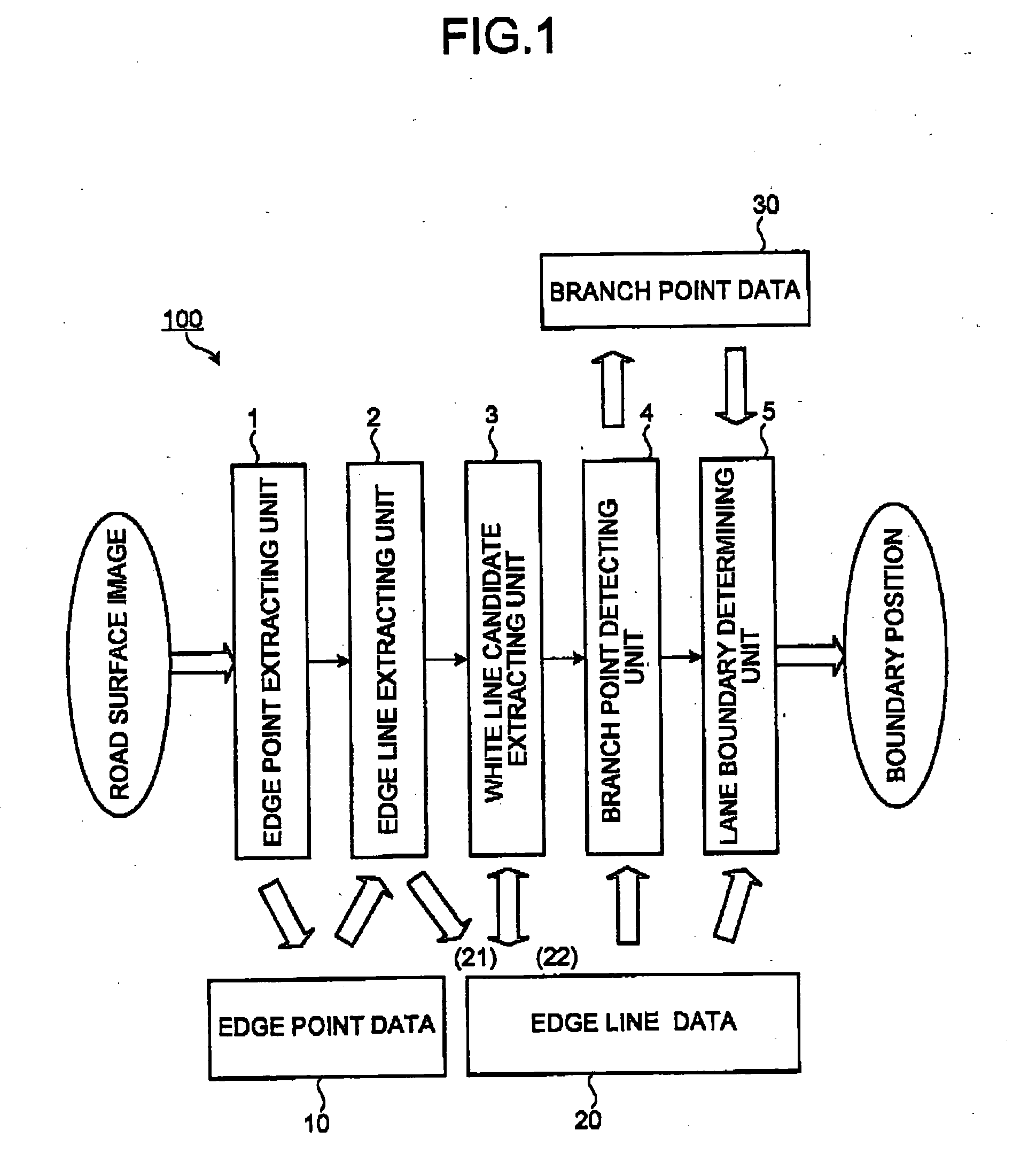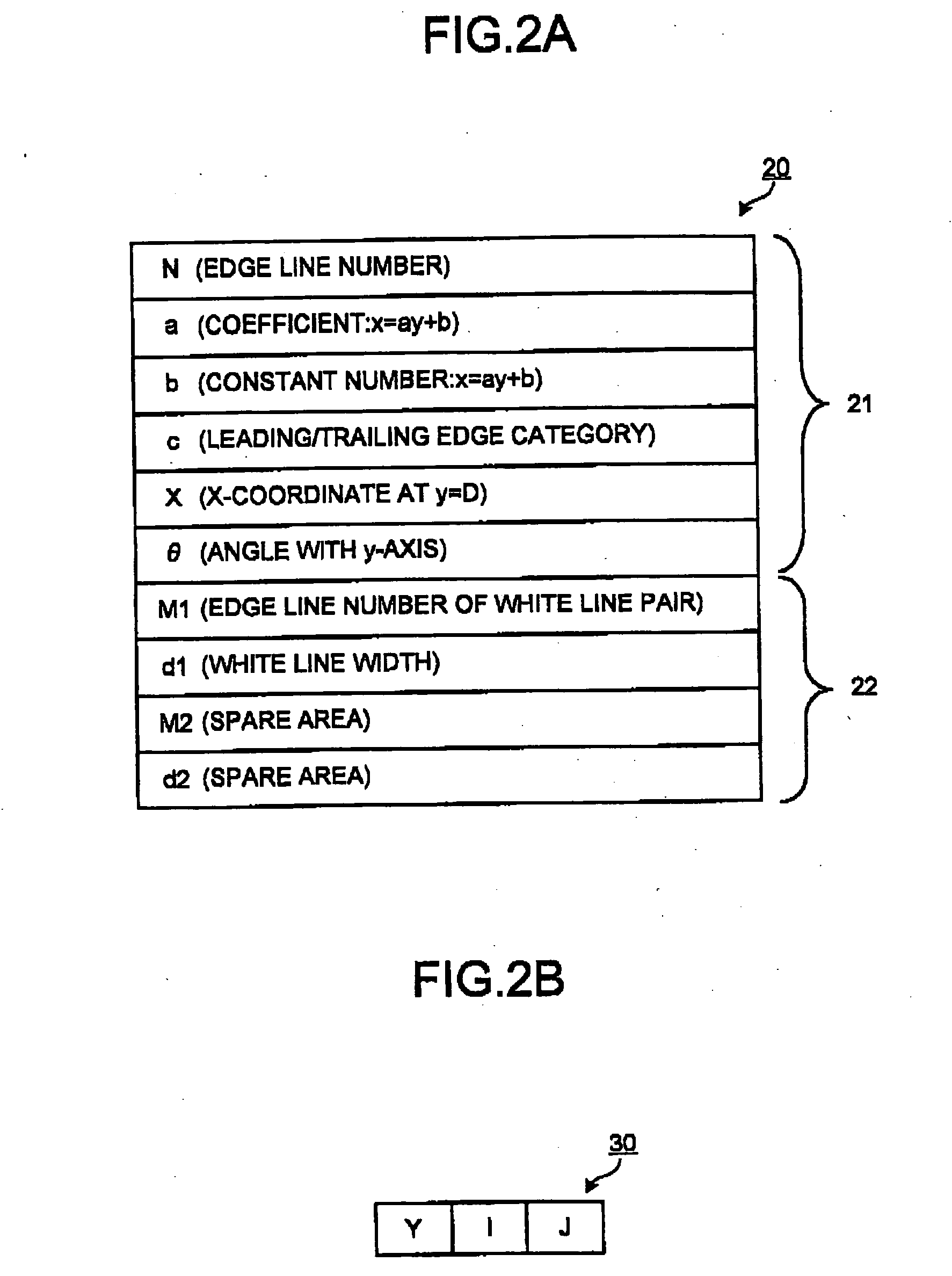Lane boundary detector
a detector and lane technology, applied in the field of detectors, can solve the problems of inability to provide real-time detection results, inability to satisfactorily solve time lag, and conventional lane boundary detectors cannot readily distinguish different types of lanes
- Summary
- Abstract
- Description
- Claims
- Application Information
AI Technical Summary
Benefits of technology
Problems solved by technology
Method used
Image
Examples
first embodiment
[0049]FIG. 1 shows a logical system structure of a lane boundary detector 100 according to a The edge point extracting unit 1 extracts an edge point based on a road surface image (hereinafter also referred to as image data) picked up by a vehicle-mounted camera, to store the extracted edge point as edge point data in a predetermined storage area such as a table 10. Here, the edge point is a point constituting a contour of lane sign such as a white line. The units 1 to 5 are realized with a computer system that communicates with the vehicle-mounted camera and has a known structure.
[0050] The edge line extracting unit 2 extracts an edge line which is a contour of the lane sign based on the edge point data, to store the data representing the edge line, i.e., edge line data, into a predetermined storage area such as a table 20.
[0051] The white line candidate extracting unit 3 verifies a validity of the edge line data stored in the table 20 based on predetermined properties such as a w...
second embodiment
[0111]FIG. 12 shows an example of a modification (second embodiment) of the content to be checked as shown in FIG. 9. In this example, an image dividing unit is provided to horizontally divide the input image into upper and lower areas. As the reference edge line k described above, an edge line that matches with the lane boundary position in the lower area of the horizontally divided image is employed. The image may be divided into three, four, or more areas.
[0112] When the road surface image is divided in the horizontal direction, usually the lower area image includes an image of a road surface area, at least a part of which has been the processing object in the previous control cycle. Since the road surface area has been the object of analysis in the previous cycle if the analysis results from the previous cycle are utilized, it is highly likely that more reliable determination of the lane boundary position is achieved.
[0113] Hence, even when the reference edge line k is defined ...
PUM
 Login to View More
Login to View More Abstract
Description
Claims
Application Information
 Login to View More
Login to View More - R&D
- Intellectual Property
- Life Sciences
- Materials
- Tech Scout
- Unparalleled Data Quality
- Higher Quality Content
- 60% Fewer Hallucinations
Browse by: Latest US Patents, China's latest patents, Technical Efficacy Thesaurus, Application Domain, Technology Topic, Popular Technical Reports.
© 2025 PatSnap. All rights reserved.Legal|Privacy policy|Modern Slavery Act Transparency Statement|Sitemap|About US| Contact US: help@patsnap.com



